
For something that’s so essential for your overall well-being, sleep isn’t always the easiest thing to come by. Thankfully, there are many methods you can try to achieve that elusive night’s sleep, from breathing exercises to following a sleep-promoting diet. Another approach you might want to test out (but probably haven’t yet)? Acupressure, a thousands-year-old massage technique boasts health benefits throughout the body, including improved shut-eye. And while it might not be the first snooze-inducing technique that comes to mind, it’s accessible and can be done from the comfort of your bed.
How Can Acupressure Help with Sleep?
On a basic level, practicing acupressure on yourself can be a great way to find a mindful moment and create some distance from the day’s stresses, which in turn can promote sleepfulness. “It is a very grounding technique since it is like self-massage, and administering it on yourself combined with essential oils, such as lavender, can really calm a busy mind and body before bedtime,” says Amrit Singh, R.Ac, a licensed acupuncturist who you might know as @6babebeauty on Instagram.
That relaxing quality of acupressure is an important reason why it's so effective for sleep, says Singh. "In Chinese Medicine, poor sleep quality is often related to the Shen, which we call our spirit or our mind," she explains. "People with busy minds often have a hard time falling and staying asleep, and acupressure can really help break that cycle."
Beyond that, there is a body of scientific research behind acupressure and its various benefits. “Studies show that acupressure can be an effective tool when dealing with insomnia,” says Dr. Hsu. “This might be explained because this therapy method affects the nervous system and hormonal mechanisms (including sleep-regulating hormones).”
Acupressure concerns itself first of all with "the underlying cause" of the issue at hand, which in this case is sleep, says Ingegno. And that's one of the reasons why the practice can be such an effective sleep aid. Think of it this way: While insomnia in and of itself can be to blame, sleep struggles are oftentimes the result of a myriad of other factors, such as stress, anxiety, pain, and more. So, unlike other sleep aids that might just knock you out (think: melatonin, certain Rx meds, or even Benadryl once and a while), acupressure offers a way to address the underlying causes rather than the sleeplessness in isolation.
“Research also suggests that acupressure can aid pain and anxiety relief,” adds Dr. Hsu. “Individuals with pain experience lower sleep quality. People suffering from anxiety also deal with frequent nighttime disturbances. And since acupressure can potentially target these two issues, it may significantly improve one’s sleep quality.”
So before performing acupressure on yourself, look at your sleep patterns, take note of what might be behind your sleepless nights, and focus on acupoints that target the underlying issue. For example, if you're stressed, you might want to focus on the Yong Quan point (more on that in the next section).
The Best Pressure Points for Sleep
Going through a routine of the below pressure points for sleep can be a wind-down routine in and of itself. But acupressure will likely work better when combined with other sleep-promoting practices, such as dimming the lights, stretching, journaling, or reading, says Ingegno.
"It can be performed while winding down shortly before getting into bed or while you are in bed," he explains. "Some people will find success with doing it in bed, others might need anywhere from 15 minutes to an hour before [doing it] to wind down. You can experiment with this and find what works best for you."
But first, consider these expert-backed tips to help you get the most out of each pressure point for sleep:
An Mian
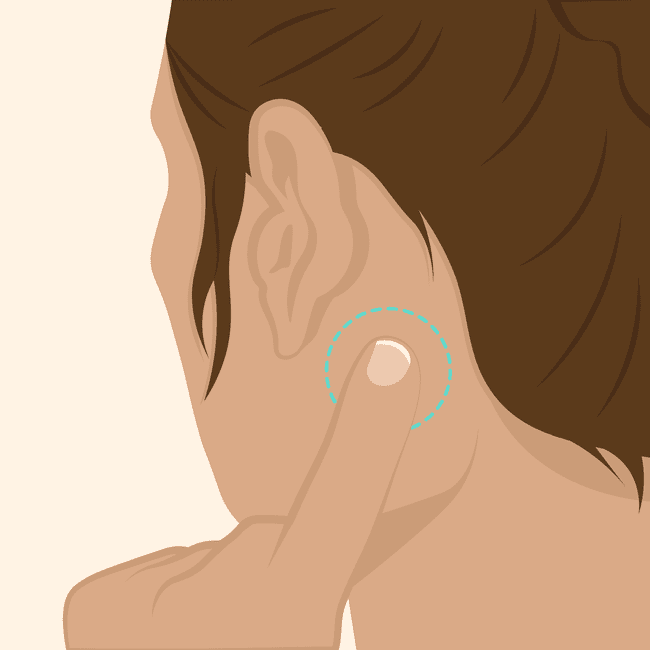
Also known as Peaceful Dreams, this aptly-named point is used to induce quality sleep and is thought to be very effective for insomnia, according to practitioners. For example, a 2013 study found that An Mian helps with depression and, in turn, insomnia when used in combination with other points. (ICYDK, depression and sleep issues are closely linked; the mental illness can lead to and be the result of lack of sleep, according to John Hopkins Medicine.)
"The easiest way to find this point is to make an 'L' with the index finger and thumb," says Ingegno. "Place the index finger directly in front of your ear and let the thumb fall right against the base of the skull. The point is roughly there."
Yong Quan
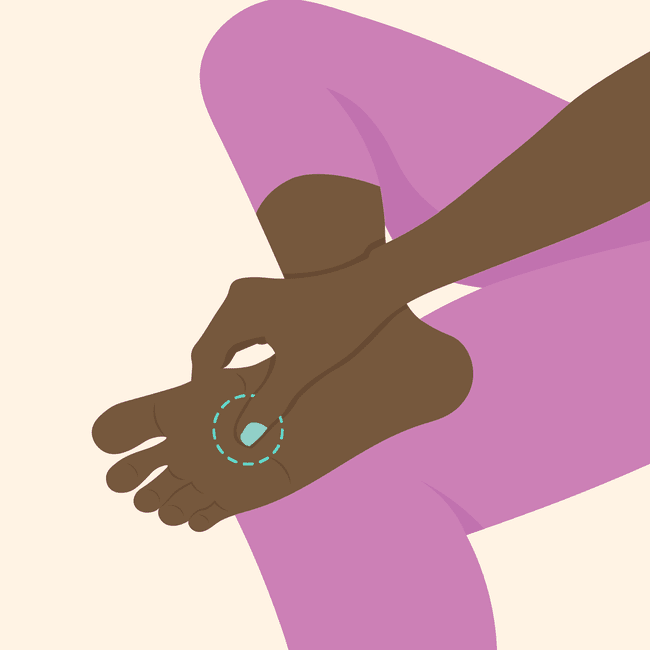
This pressure point for sleep — which is also referred to as Gushing Spring — "is one of the few points on the bottom of the foot, making it very grounding," says Singh. "It's located between the ball of your foot and your second or third toes in the same line. The most tender area is the best one to work with."
Yong Quan “is the first point on the kidney channel,” adds Singh. In TCM, this means that it’s connected to the adrenal glands, which control the body’s stress response, explains Dr. Hsu. Meaning, that it’s a particularly effective pressure point for sleep — after all, stress can have a large impact on the quality and quantity of your zzz’s. In fact, a 2012 study found Yong Quan — alongside Shen Men (the next acupoint on this list) — to help improve the sleep time and quality of ICU patients.
Before calling it a night and kicking your feet up, keep in mind that Yong Quan is sometimes used to induce labor, says Ingegno. So, if you're pregnant, you should skip this pressure point for sleep.
Shen Men
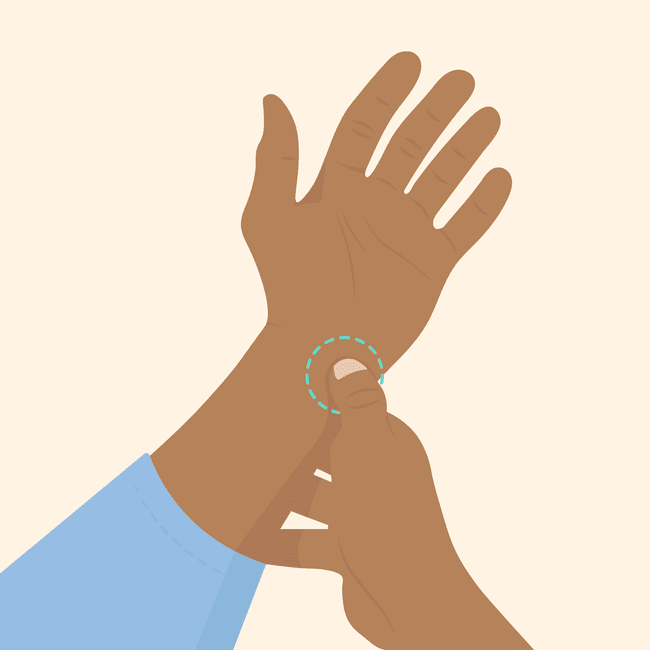
A point cited by all three experts, “the Shen Men acupoint is believed to help alleviate insomnia and may even lead to increased sleep quality,” explains Dr. Hsu.
"This spot is located on the inner wrist (slightly to the side, close to the spot where people usually measure their pulse)," he says. "To target this acupoint, readers need to bend the hand forward slightly and find the dip between the two tendons."
Yin Tang
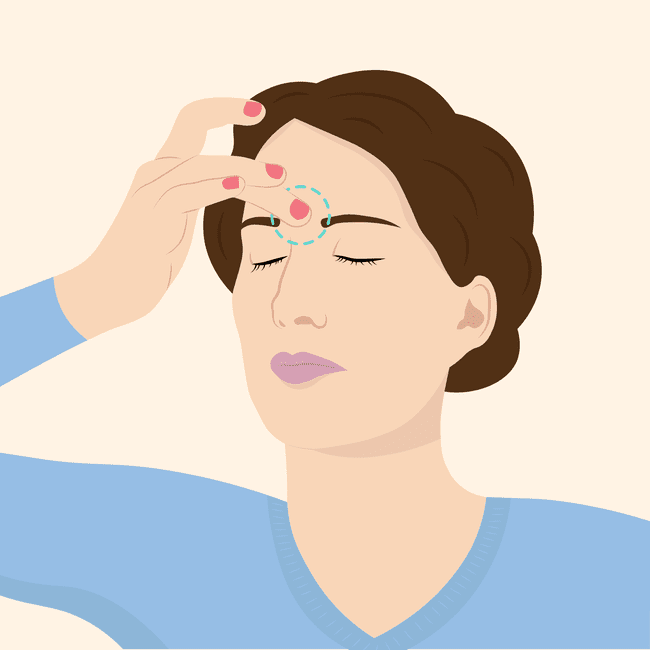
Yin Tang "is located in the center of both eyebrows in line with the nose and is often referred to the area of the 'third eye,'" says Singh.
As for what it does, “this acupoint is believed to help with restlessness, agitation, and insomnia,” explains Dr. Hsu. “Gentle pressure using one finger should be enough, but readers can go a bit firmer.” Why? Because this may feel more comfortable for some folks, especially those that have more tension in that spot. If that’s the case, “more pressure may lead to deeper relaxation,” adds Dr. Hsu.
San Yin Jiao
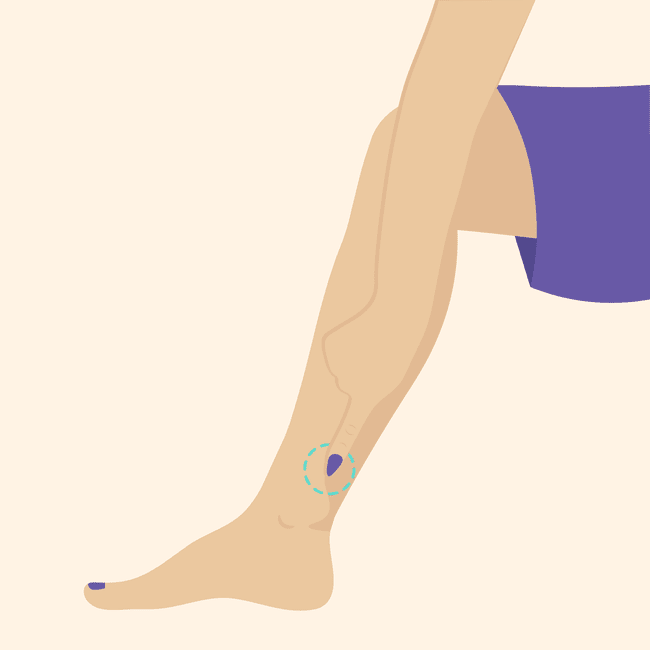
“Massaging the San Yin Jiao point can help improve sleep quality and reduce fatigue,” according to Dr. Hsu. And research backs this up: Studies suggest that targeting this acupoint can lead to “increased REM sleep, more hours of slumber, and overall improved sleep quality,” he points out. Not only is your “third eye” a pressure point for sleep, but it might also be effective at easing period cramps (which can wreak havoc on sleep, among other elements of life) that occur before or during menstruation, according to a 2010 study. Added bonus: Targeting San Yin Jiao has been shown to decrease pain during labor.
“It’s located inside of the leg, on the highest point of the ankle (near the curved ball-like bone),” explains Dr. Hsu. “This point is relatively easy to reach for side sleepers, which means they can incorporate gentle massage while already lying in bed.” What’s more, targeting this point in the fetal position “can open the space between the vertebrae and relieve pressure from the lower back, [too],” he says. “Less tension encourages further relaxation that’s beneficial for overall sleep quality.” (See also: 7 Bedtime Stretches That Will Help You Fully Decompress)
Bai Hui
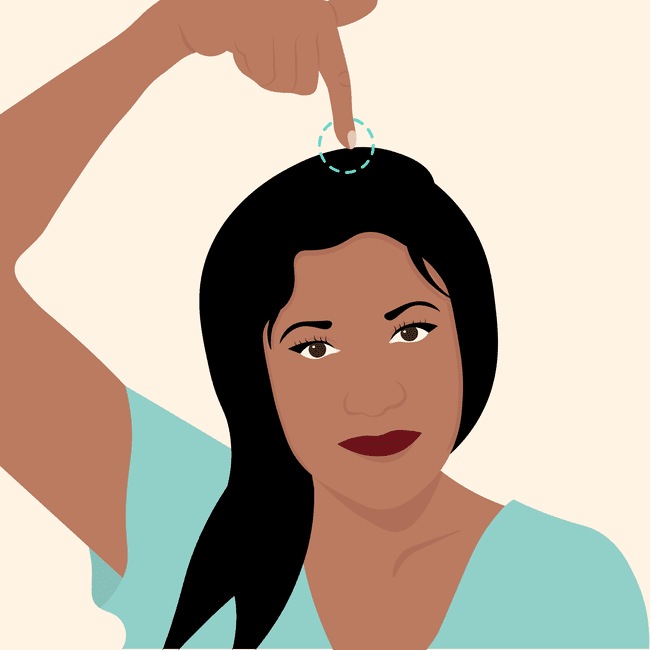
Located at the top of the head, Bai Hui “is most easily found by finding the high point of your ear and then sliding up to the top of your head,” says Ingegno. This pressure point for sleep is also known as Hundred Meetings because “it is thought to be where every other acupuncture channel eventually meets,” she explains. And since it’s close to the brain, it’s believed to calm the nervous system, according to TCM and some research. For example, a small study from 2017 found Bai Hui (in tandem with other acupoints) to improve sleep quality among nursing home residents, who frequently suffered from sleep disturbances.






































